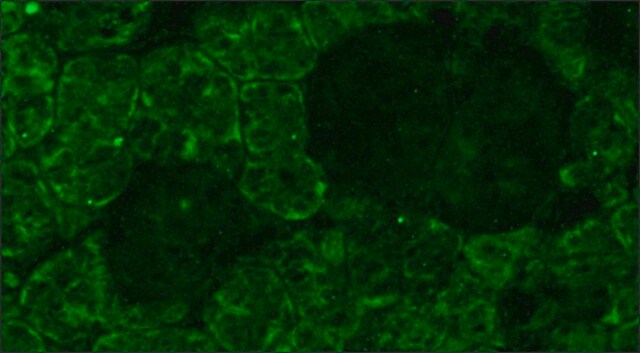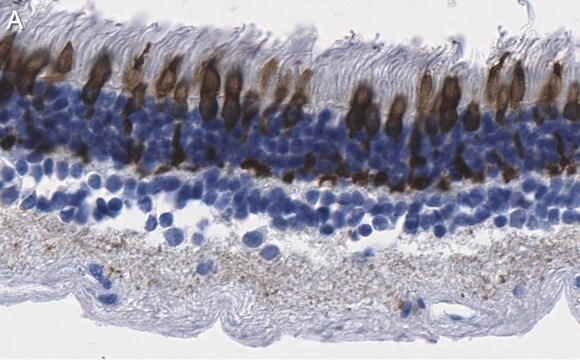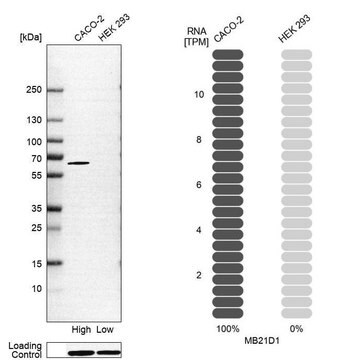SAB4200762
Anti-Opsin antibody, Mouse monoclonal
clone RET-P1, purified from hybridoma cell culture
Synonym(s):
Anti-Opsin 2, Anti-Rhodopsin
About This Item
Recommended Products
biological source
mouse
Quality Level
antibody form
purified from hybridoma cell culture
antibody product type
primary antibodies
clone
RET-P1, monoclonal
form
buffered aqueous solution
mol wt
~39 kDa
species reactivity
avian, bovine, fish, mouse, rat, human, amphibian, turtle, rabbit
concentration
~1 mg/mL
technique(s)
ELISA: suitable
immunoblotting: 2-4 μg/mL using human retinoblastoma Y79 cell line extract.
immunofluorescence: suitable
immunohistochemistry: 5-10 μg/mL using rat eye frozen sections.
radioimmunoassay: suitable
isotype
IgG1
UniProt accession no.
shipped in
dry ice
storage temp.
−20°C
target post-translational modification
unmodified
Gene Information
rat ... Rho(24717)
General description
Application
- immunoblotting
- immunofluorescence
- immunohistochemistry
- enzyme linked immunosorbent assay (ELISA)
- radioimmuno assay (RIA)
Biochem/physiol Actions
Other Notes
Physical form
Not finding the right product?
Try our Product Selector Tool.
Storage Class
10 - Combustible liquids
wgk_germany
WGK 3
flash_point_f
Not applicable
flash_point_c
Not applicable
Choose from one of the most recent versions:
Certificates of Analysis (COA)
Don't see the Right Version?
If you require a particular version, you can look up a specific certificate by the Lot or Batch number.
Already Own This Product?
Find documentation for the products that you have recently purchased in the Document Library.
Global Trade Item Number
| SKU | GTIN |
|---|---|
| SAB4200762-100UL | 4061833253786 |
Our team of scientists has experience in all areas of research including Life Science, Material Science, Chemical Synthesis, Chromatography, Analytical and many others.
Contact Technical Service







